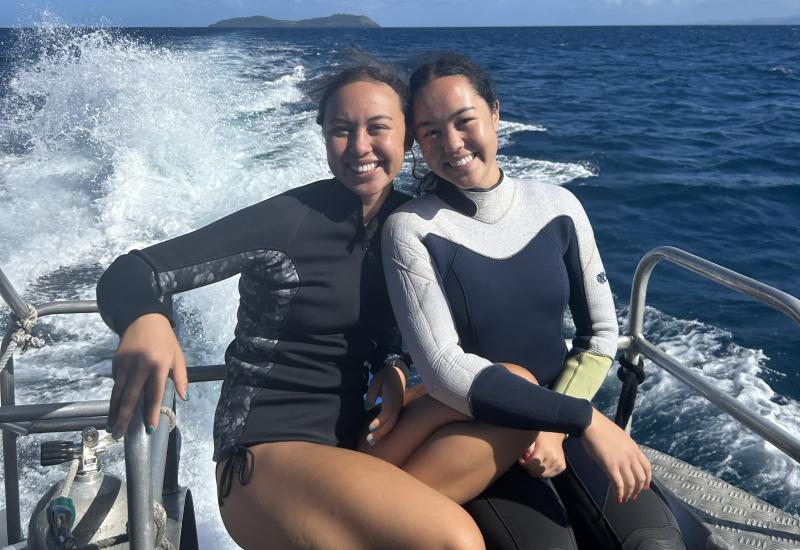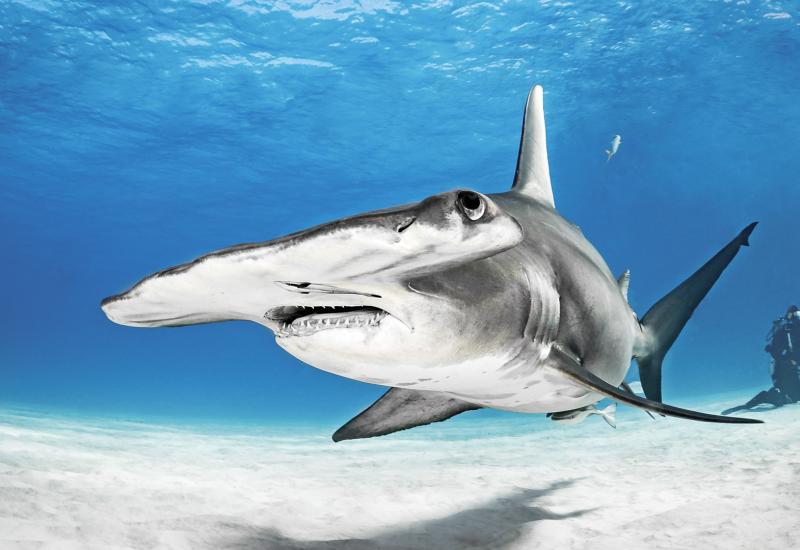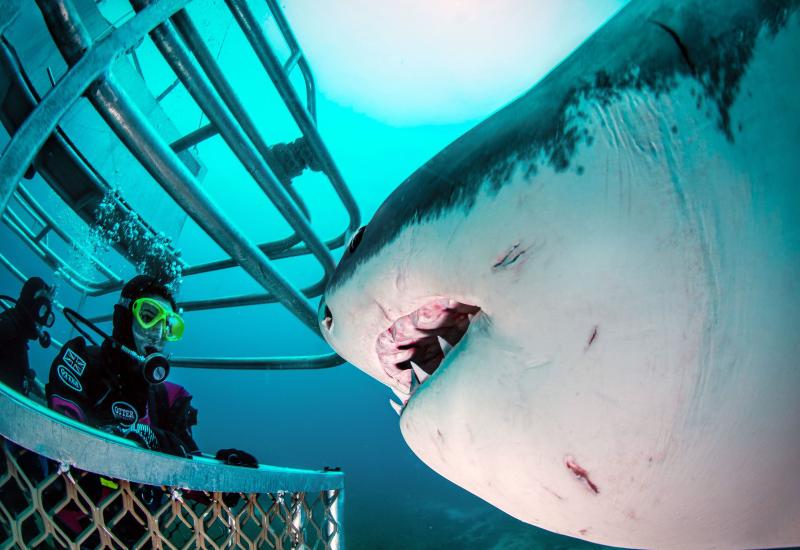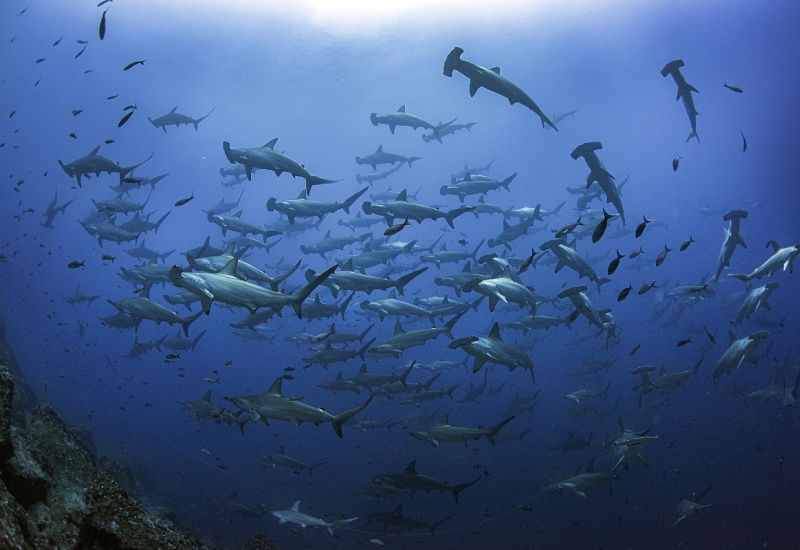What It’s Like to Pilot a Self-Propelled Cage Among Great Whites
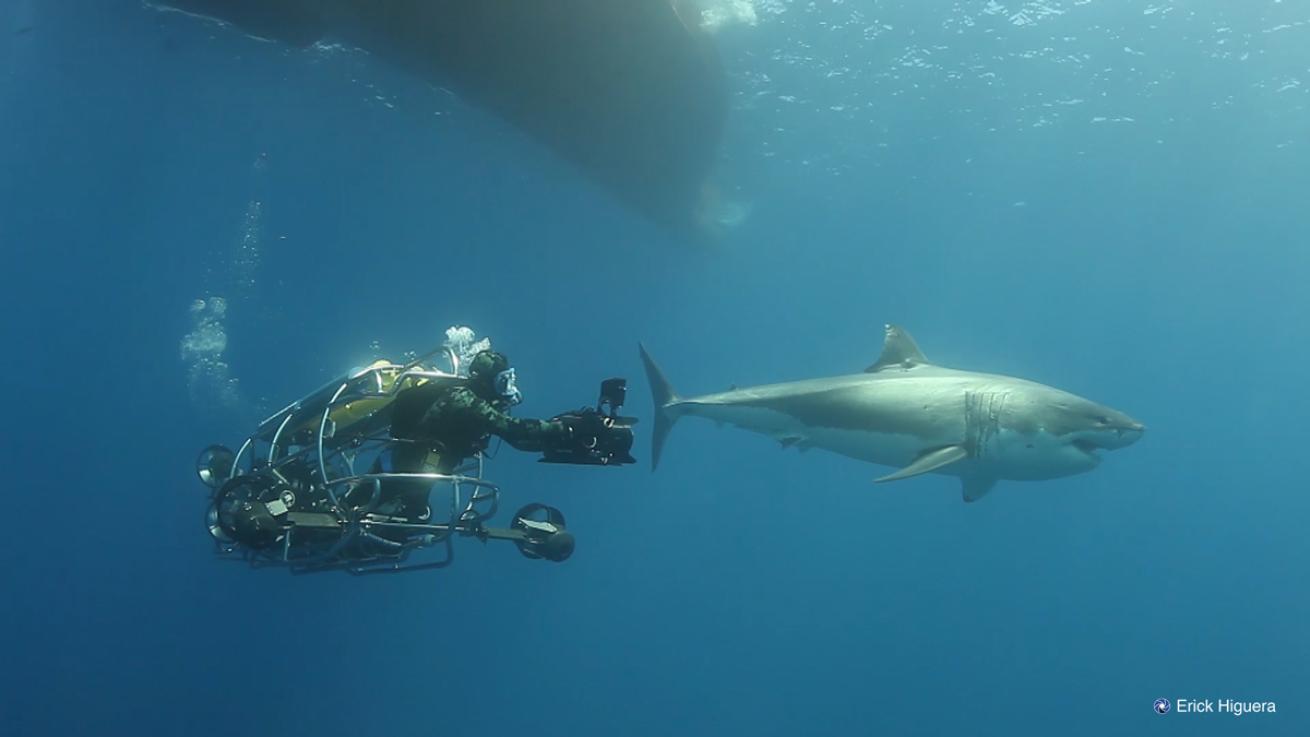
Courtesy Erick HigueraAn up-close view of the Self Propelled Shark Cage in Guadalupe Island.
Lawrence Groth of Shark Diving International designed the Self-Propelled Ocean Cage for the Solmar V liveaboard. I spent hundreds of hours in the passenger seat with him, taking photos of the animals, before I piloted the SPOC myself. It’s a self-propelled cage that we use in the waters around Guadalupe Island (off the Baja California Peninsula) to give guests a different vantage point of the great white sharks that migrate to the area every year. We first took the cage to Guadalupe back in 2009. It was pretty sketchy back then and a lot of things needed to be done to make the SPOC safe. It’s not a submarine, like a lot of people think — it’s a self-propelled cage with four thrusters, six propellers and two afterburners and weighs more than 1,000 pounds. It’s about 10 feet long and allows us to follow the sharks underwater without disturbing them. The SPOC was originally built to document feeding, fighting and mating events—to let us get up close to the animals without being in any danger, for scientific purposes and filming projects. Now it’s an offering with Pacific Fleet trips, and I’m able to take one diver at a time down with me.
We usually go to about 30 feet and can stay for 45 minutes. This isn’t an experience for an open water diver with just a few dives, however. You have to be comfortable wearing a full-face mask, which we use for communications between the pilot and passenger and also to talk to the crew on the boat. There are two 15-liter tanks of air (or Nitrox or trimix) inside the SPOC, and you wear a small BCD. Divers need to be experienced and able to control their buoyancy and resolve any problems in case of an emergency.
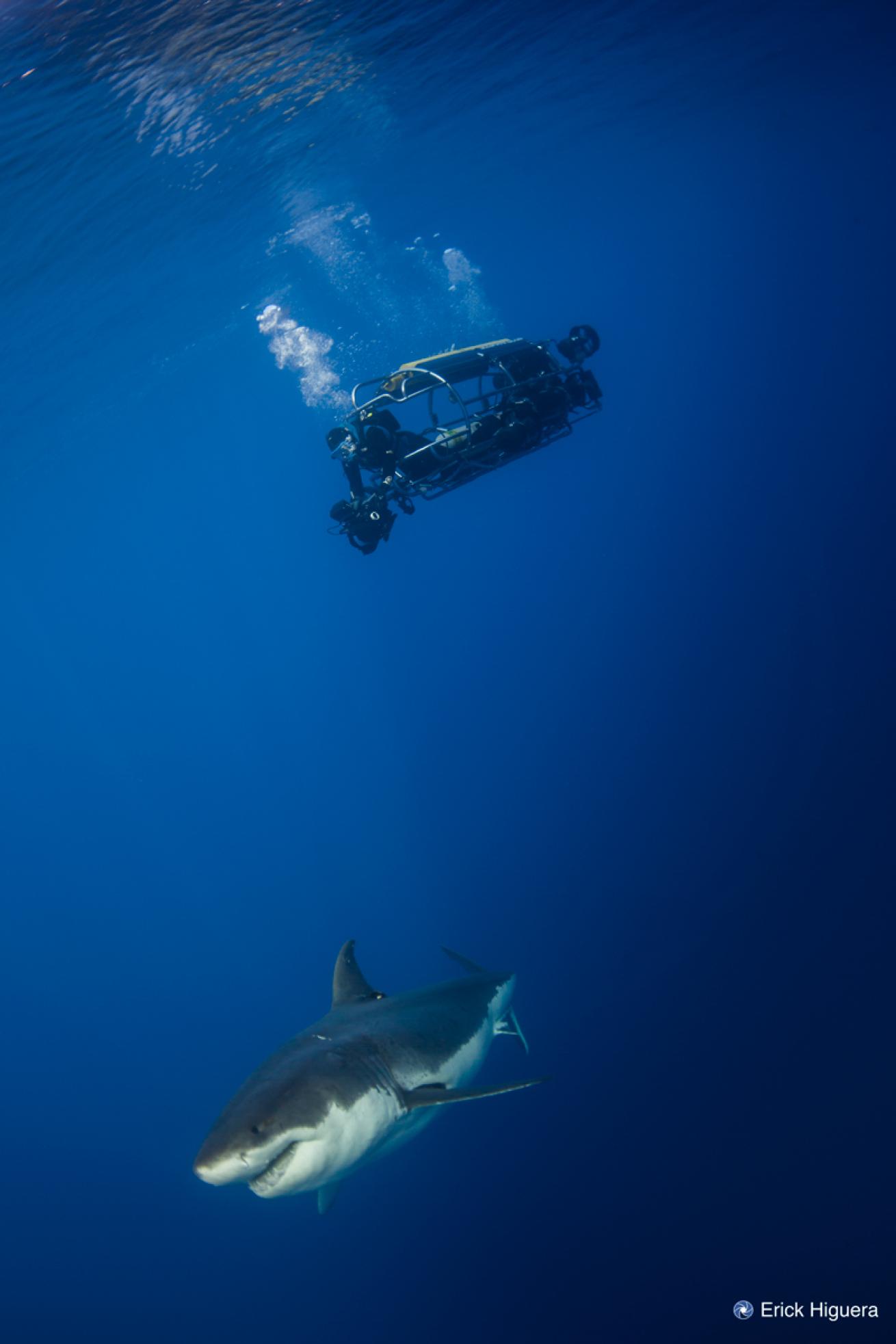
Courtesy Erick HigueraA diver in the SPOC looks on as a great white swims by.
The experience of being down there with the animals—the unique angles and behavior you see—is indescribable. At first, I felt most cautious with the juvenile great whites. They’re more nervous and excitable than the adult sharks. The big adult sharks let you cruise next to and underneath them. On a good day with a relaxed shark, we can cruise alongside them for 20 to 30 minutes. The view from the SPOC is like no other. You get a big-screen picture of the entire activity—from near the surface where the sharks are being baited by the shark wranglers to seeing how the sharks swimming a bit deeper in the water column react while keeping an eye on everything while swimming below you. You can also see how the other fish—like yellowfin tunas and mackerel—use the great whites as cleaning stations, rubbing their skin along the sharks.
Every shark has a different personality and I never know what a day piloting the SPOC will bring. We’ve seen a lot of behaviors, but I’m still hoping to see a predation event with northern elephant seals, California sea lions or Guadalupe fur seals. As for the divers, their reactions are really excited, totally amazed. Some people have even cried. It can be like shark euphoria down there.

